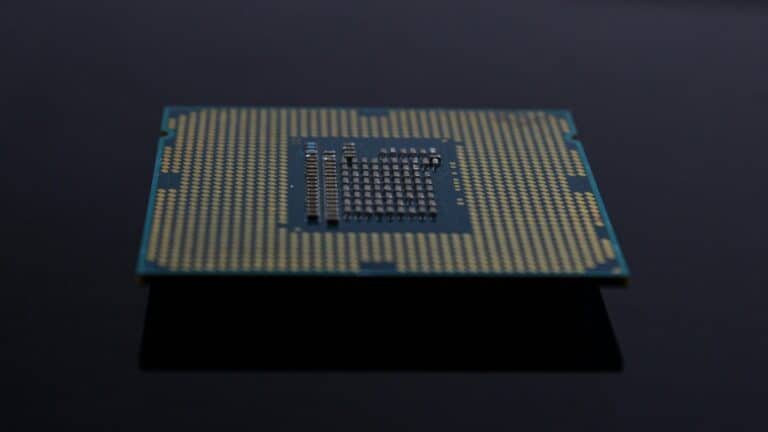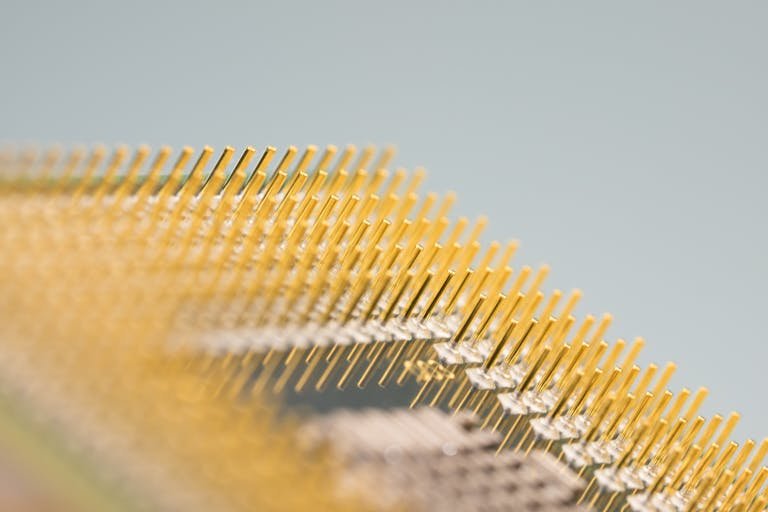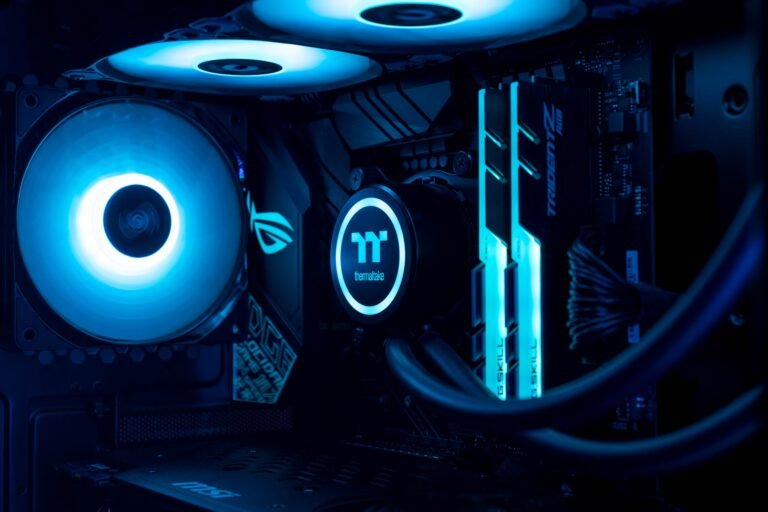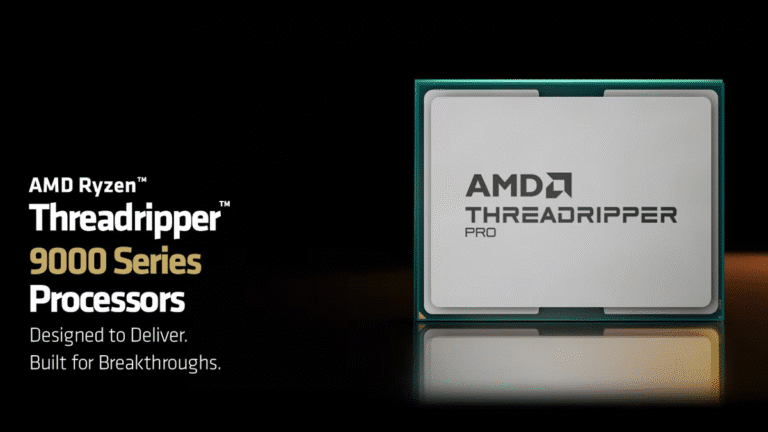Amd Ryzen 7 5800X Zen 3 Review
The AMD Ryzen 7 5800X is a Pro delivers excellent performance in demanding applications such as video editing, 3D rendering, and multitasking. However, when it comes to gaming, the Ryzen 7 5800X performs nearly the same as its more affordable 6-core counterpart, the Ryzen 5 5600X. Both CPUs share similar single-core speeds, meaning most games show little to no real-world performance difference between them. For gamers focused purely on FPS and value, the Ryzen 5 5600X remains the smarter choice, while the Ryzen 7 5800X is better suited for users who also need stronger multi-core performance for streaming or productivity workloads.
Pros of the AMD Ryzen 7 5800X
- Excellent Multitasking performance
- Strong single-core and multi-core performance
- Noticeable IPC improvements and high boost clock speeds
- Impressive power efficiency
- Fully unlocked for overclocking
- Compatible with AMD 400-series and 500-series motherboards
Cons
- Price
- No bundled cooler
- No integrated graphics
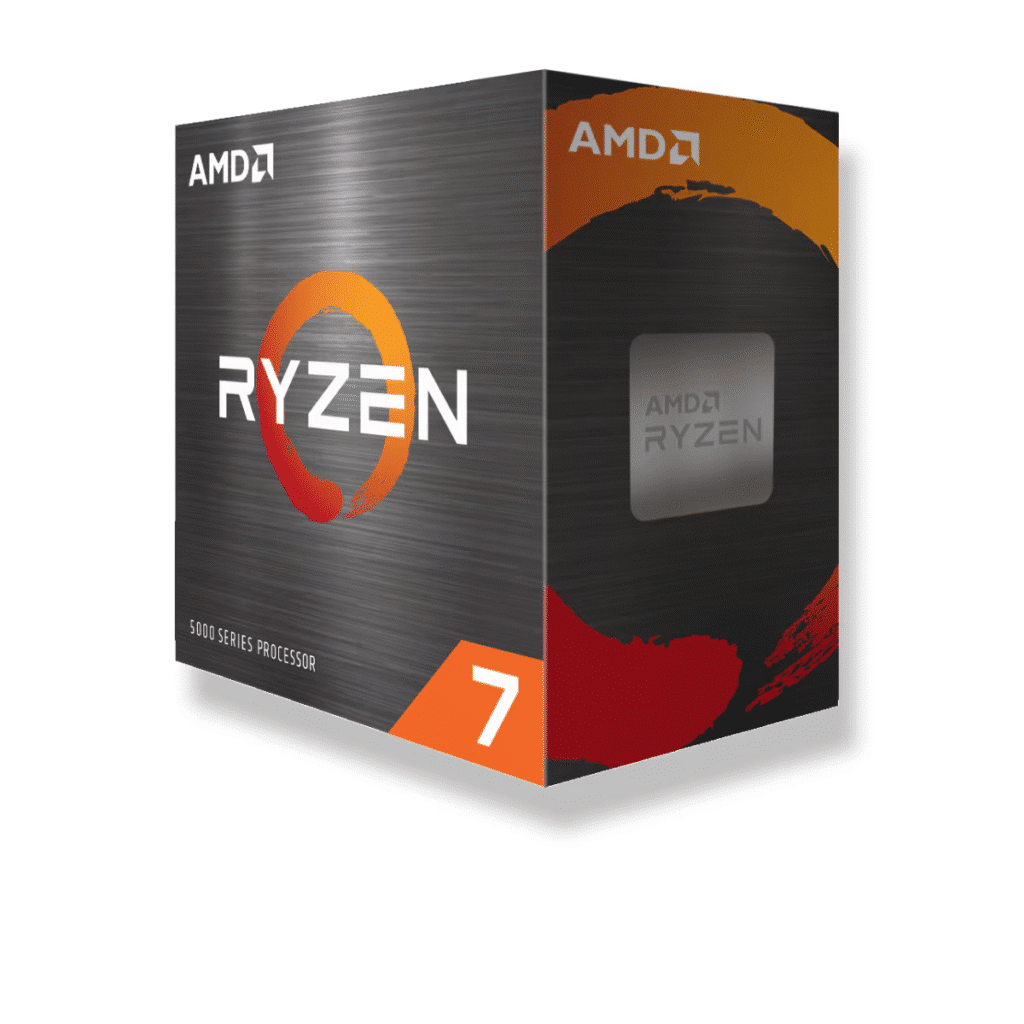
The AMD Ryzen 7 5800X is an eight-core, sixteen-thread processor built on AMD’s powerful Zen 3 architecture. Positioned as the mainstream powerhouse of the Ryzen 5000 series, it delivers exceptional performance for gaming, content creation, and everyday productivity. Thanks to a 19% increase in IPC (instructions per cycle) over previous-generation CPUs, the Ryzen 7 5800X sets a new performance standard for eight-core processors. With its strong balance of speed, efficiency, and multitasking capability, it continues to dominate CPU benchmark charts and remains one of the best CPUs for gamers and creators alike.
However, pricing plays a crucial role in defining a CPU’s value, and the Ryzen 7 5800X enters the market at a relatively high price point—around $50 more than its predecessor. This premium positions it against tough competition, not only from other AMD Ryzen processors but also from Intel’s Core i7-10700K, which offers similar gaming performance at a lower cost. As a result, while the Ryzen 7 5800X delivers excellent performance, its price-to-performance ratio may lead some buyers to consider Intel’s offering as a more budget-friendly alternative.
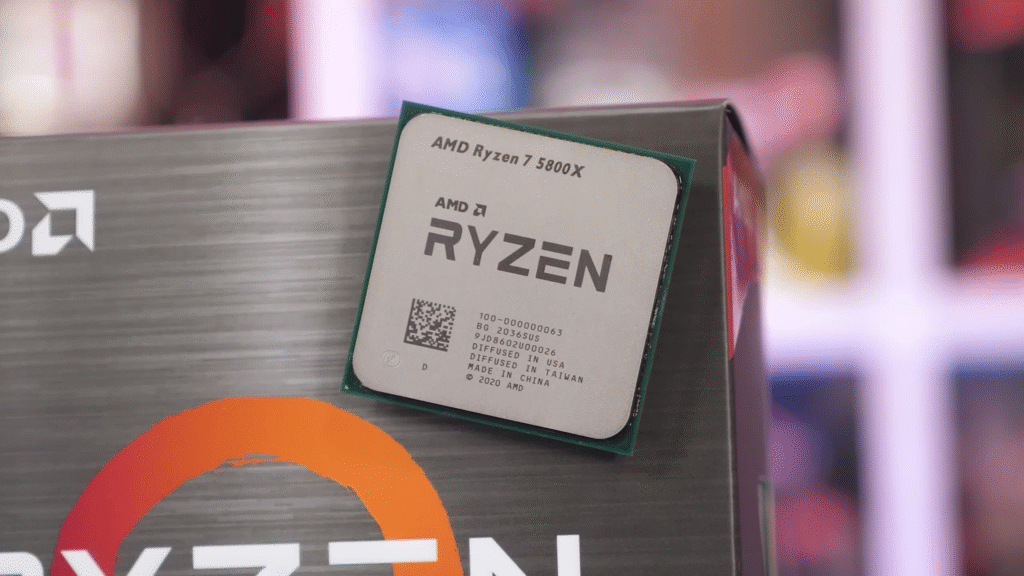
The AMD Ryzen 7 5800X, priced at $449, sits one step above the Ryzen 5 5600X, a six-core, 12-thread processor often praised as the best gaming CPU for the money. However, despite its higher cost—around $150 more—the Ryzen 7 5800X delivers nearly identical gaming performance to the 5600X.
Another key change is that AMD no longer includes stock coolers with CPUs that have a TDP higher than 65W. As a result, the 105W Ryzen 7 5800X ships without the Wraith Prism RGB cooler, which was previously a major selling point for AMD’s Ryzen 7 lineup. Users will now need to invest in a 280mm AIO liquid cooler or a high-end air cooler, increasing the overall system cost. This makes the Ryzen 7 5800X less appealing to gaming-focused buyers, especially since its two extra cores don’t translate into significant gaming performance gains over the Ryzen 5 5600X.
On the other hand, the Ryzen 9 5900X, priced at $549, is a more attractive choice for productivity enthusiasts. With 12 cores and 24 threads, it offers roughly 37% more performance in multi-threaded workloads for only 22% more money. It also ranks as the fastest gaming processor in AMD’s Zen 3 lineup, meaning users gain both superior productivity performance and top-tier gaming capability without compromise.
AMD Ryzen 5000 Series Processor Competition
Zen 3 Ryzen 5000 Series Processors | RCP (MSRP) | Cores/Threads | Base/Boost Freq. | TDP | L3 Cache |
|---|---|---|---|---|---|
Ryzen 9 5950X | $799 | 16 / 32 | 3.4 / 4.9 | 105W | 64MB (2×32) |
Core i9-10980XE | $815 (retail) | 18 / 36 | 3.0 / 4.8 | 165W | 24.75MB |
Ryzen 9 3950X | $749 | 16 / 32 | 3.5 / 4.7 | 105W | 64MB (4×16) |
Ryzen 9 5900X | $549 | 12 / 24 | 3.7 / 4.8 | 105W | 64MB (2×32) |
Core i9-10900K / F | $488 – $472 | 10 / 20 | 3.7 / 5.3 | 125W | 20MB |
Ryzen 9 3900XT | $499 | 12 / 24 | 3.9 / 4.7 | 105W | 64MB (4×16) |
Ryzen 7 5800X | $449 | 8 / 16 | 3.8 / 4.7 | 105W | 32MB (2×16) |
Core i9-10850K | $453 | 10 / 20 | 3.6 / 5.2 | 95W | 20MB |
Core i7-10700K / F | $374 – $349 | 8 / 16 | 3.8 / 5.1 | 125W | 16MB |
Ryzen 7 3800XT | $399 | 8 / 16 | 3.9 / 4.7 | 105W | 32MB (2×16) |
Ryzen 5 5600X | $299 | 6 / 12 | 3.7 / 4.6 | 65W | 32MB (1×32) |
Core i5-10600K / F | $262 – $237 | 6 / 12 | 4.1 / 4.8 | 125W | 12MB |
Ryzen 5 3600XT | $249 | 6 / 12 | 3.8 / 4.5 | 95W |
The Intel Core i9-10850K, priced at $440, enters the scene with 10 cores and 20 threads, positioning itself as a direct competitor to the AMD Ryzen 7 5800X. This processor delivers nearly identical gaming performance to Intel’s flagship Core i9-10900K, while costing about $10 less than the Ryzen 7 5800X. However, despite its higher core count, Intel’s aging Skylake architecture struggles to keep up with the Ryzen 7 5800X’s superior gaming and single-threaded performance. While the i9-10850K does achieve roughly 3% better multi-threaded throughput, its higher power consumption and older platform make it a less compelling choice overall.
One noticeable issue in AMD’s Zen 3 lineup is the lack of a Ryzen 7 5700X, which would ideally fill the $150 price gap between the Ryzen 5 5600X and Ryzen 7 5800X. For now, that space allows Intel’s Core i7-10700K, priced around $374, to serve as a budget-friendly alternative to the 5800X. However, while the 10700K offers good value, it comes with trade-offs in both performance and efficiency. Gamers and creators looking for the best overall balance of speed, power efficiency, and modern architecture will still find the Ryzen 7 5800X to be the stronger long-term choice.
AMD’s current pricing strategy could become a disadvantage if Intel adopts a more aggressive approach. However, AMD’s suggested retail prices (MSRPs) rarely match real-world retail pricing. Due to ongoing chip shortages, Ryzen 5000 series CPUs have often sold well above their official prices. Historically, though, once supply stabilizes, AMD processors tend to drop below MSRP, making it difficult to predict future CPU prices as availability improves in the coming months.
Looking ahead, Intel’s response is expected in the first quarter of 2021 with the launch of its Rocket Lake processors. These new CPUs feature the Cypress Cove architecture, which delivers a double-digit IPC performance boost while continuing to use the 14nm manufacturing process. Early reports suggest strong per-core performance, signaling a much-needed comeback for Intel in the mid-range segment.
That said, Intel Rocket Lake CPUs will top out at eight cores, meaning they won’t compete directly with AMD’s Ryzen 9 series in multi-threaded workloads. However, they could still serve as worthy competitors to the Ryzen 7 5800X and Ryzen 5 5600X. For now, AMD’s Zen 3 lineup has left Intel’s Comet Lake CPUs behind in both efficiency and gaming performance—so buyers should only consider Intel’s current chips if they are priced significantly below official MSRP.
Ryzen 7 5800X Specifications and Pricing
The AMD Ryzen 5000 series lineup includes four processors, ranging from six cores and twelve threads up to sixteen cores and thirty-two threads. With this generation, AMD increased Precision Boost clock speeds across most models — except for the Ryzen 7 5800X, which retains the same 4.7 GHz boost clock as its predecessor, the Ryzen 7 3800XT.
As before, AMD guarantees its boost frequency on a single core, while all-core boost speeds depend on factors such as cooling quality, power delivery, and motherboard firmware. When properly cooled, these CPUs can even exceed their rated boost clocks. In testing, our Ryzen 7 5800X sample frequently reached 4.85 GHz on a single core, outperforming its official specification — showing that AMD has conservatively rated its Zen 3 processors.
Interestingly, Zen 3 base frequencies are slightly lower than those of the previous generation. For example, the Ryzen 7 5800X ships with a 3.8 GHz base clock, compared to 3.9 GHz on the older Ryzen 7 3800XT. In real-world use, however, this small difference has minimal performance impact. With an adequate cooling solution, the processor rarely drops to its base frequency. In fact, during testing, the Ryzen 7 5800X maintained all-core boosts around 4.5 GHz, a level that was unattainable on previous-generation chips — a clear testament to Zen 3’s improved efficiency and performance tuning.
AMD Ryzen 5000 Series CPUs
Zen 3 Ryzen 5000 Series Processors | RCP (MSRP) | Cores/Threads | Base/Boost Freq. | TDP | L3 Cache |
|---|---|---|---|---|---|
Ryzen 9 5950X | $799 | 16 / 32 | 3.4 / 4.9 GHz | 105W | 64MB (2×32) |
Ryzen 9 5900X | $549 | 12 / 24 | 3.7 / 4.8 GHz | 105W | 64MB (2×32) |
Ryzen 7 5800X | $449 | 8 / 16 | 3.8 / 4.7 GHz | 105W | 32MB (1×32) |
Ryzen 5 5600X | $299 | 6 / 12 | 3.7 / 4.6 GHz | 65W | 32MB (1×32) |
The AMD Ryzen 5000 series processors continue to provide 20 lanes of PCIe 4.0 connectivity and use DDR4-3200 memory as the standard specification. Thanks to improved Infinity Fabric overclocking, these chips now offer significantly better memory overclocking potential than previous generations—especially if you get lucky with the silicon. In testing, we achieved a DDR4-3800 memory overclock with a 1:1 fabric ratio, something that wasn’t possible with the Ryzen 7 3800XT, though still just short of the DDR4-4000 speeds reached with the Ryzen 9 5900X. The 500-series motherboard firmware is already stable and mature, but memory and fabric tuning are still evolving. Expect further refinements and higher memory stability as new BIOS updates roll out.
The Ryzen 5000 processors are fully compatible with existing AM4 motherboards that feature 500-series chipsets, including X570, B550, and A520 models. AMD has also confirmed support for 400-series motherboards, starting in Q1 2021, although with certain feature limitations. Some motherboard manufacturers have already enabled beta BIOS updates to bring early support to B450 and X470 boards. Keep in mind, however, that PCIe 4.0 support will not be available on these older chipsets.
For a deeper technical breakdown, refer to our Ryzen 9 5950X and 5900X review, where we explore the Zen 3 microarchitecture in more detail. In short, AMD’s unified 32MB L3 cache design dramatically reduces memory latency, leading to notable gains in gaming and other latency-sensitive workloads. Combined with several fine-tuned architectural optimizations, Zen 3 delivers the most refined and efficient performance yet from AMD’s AM4 platform.
AMD’s Ryzen 5000 series continues to leverage the company’s proven Ryzen SoC architecture, combining efficiency with performance. The Zen 3 architecture uses the same 12nm I/O Die (IOD) paired with either one or two 8-core Core Chiplet Dies (CCD) in a Multi-Chip Module (MCM) design. In the case of the Ryzen 7 5800X, AMD utilizes a single CCD with all eight cores fully enabled, while higher-end models like the Ryzen 9 5900X and 5950X feature two CCDs to achieve 12 and 16 cores, respectively.
The I/O Die remains identical to that found in the previous Matisse (Zen 2) generation, featuring integrated memory controllers, PCIe 4.0 lanes, and system interfaces that connect the SoC to the rest of the platform. The IOD measures approximately 125mm² and houses 2.09 billion transistors.
The real change lies in the redesigned Zen 3 CCDs, which now measure around 80.7mm² and contain 4.15 billion transistors—a modest increase over Zen 2’s 74mm² CCDs with 3.9 billion transistors. This refined design is a key factor behind Zen 3’s impressive 19% increase in IPC (Instructions Per Cycle), which significantly boosts both gaming and productivity performance.

